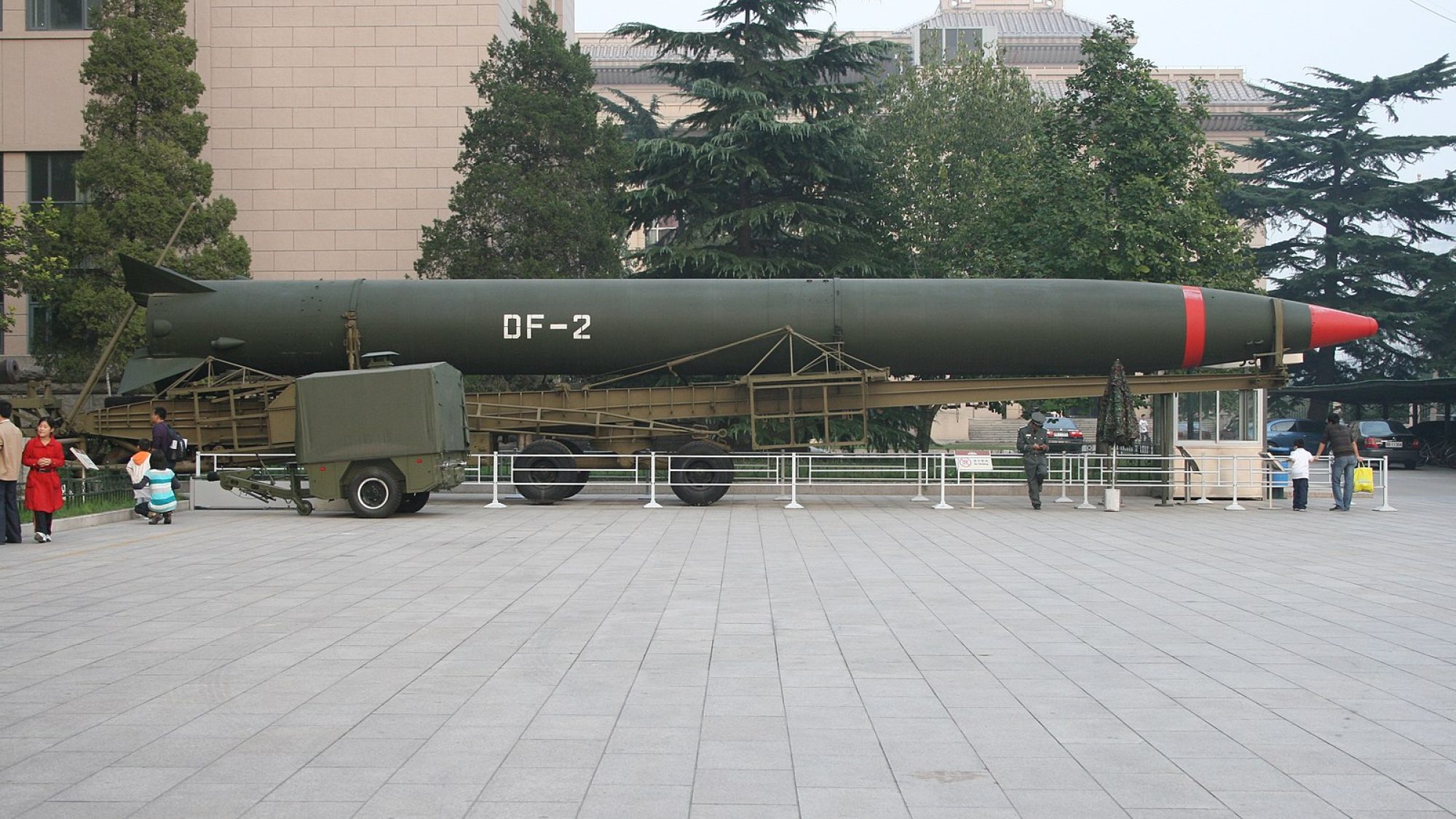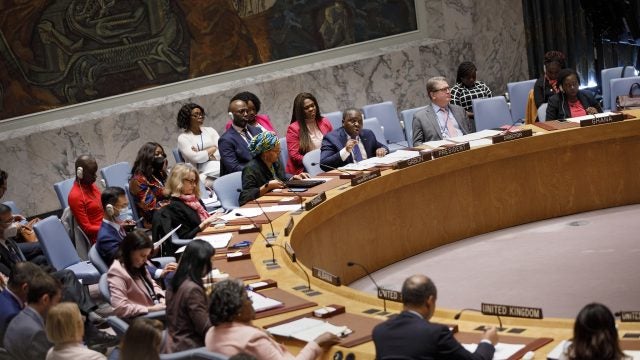
Title: The Dual Nature of China’s Nuclear Modernization
China is modernizing and expanding its nuclear arsenal, consistent with President Xi Jinping’s desire to build Chinese wealth and power. To understand China’s strategy — and how to counter it — recent developments must be seen in the context of an equally aggressive US nuclear posture. This competition can only be resolved through increased diplomacy, not a new arms race.
China’s nuclear weapons pose genuine threats to the United States and other nations. Disclosures in the summer of 2021 of China’s construction of several hundred missile silos and its recent test of a hypervelocity glide vehicle have triggered dozens of alarmist articles and comments. Many have echoed a question a student asked President Joe Biden at a late-October CNN town hall: “What will you do to keep up with [China] militarily?”
China is chasing the United States, however, not the other way around.
The United States dominates China by nearly all military measures. It spends three times what China does on its military ($778 billion in 2020 compared to China’s $252 billion). If Asia’s US allies and China’s rivals are added (India, Japan, South Korea, Australia, and Taiwan), the total balloons to nearly four times China’s budget, or $993 billion. The US defensive perimeter extends 6,000 miles from California to China’s borders. On the nuclear front, China has about 185 nuclear warheads on about 110 long-range missiles that can reach the continental United States; the United States has about ten times that number, or 1,800 weapons on missiles, submarines, and bombers that could pulverize China.
Both arsenals are excessive. One city destroyed by just one weapon would be a level of destruction not seen since World War II. Ten weapons burning ten cities would be a catastrophe unprecedented in human history. One hundred weapons would destroy not only the targeted nation but likely unleash a nuclear winter that could destroy all of human civilization.
Since China detonated its first weapon test in 1964 (about twenty years after US and Soviet tests), it has steadily developed a small but robust force that could survive a first strike and threaten a retaliatory second strike. China’s leaders believed (correctly) that it need not match the thousands of nuclear weapons deployed by the United States and Russia in order to deter attacks.
US military leaders have often mirror-imaged China’s strategy, believing that China aimed for nuclear equivalency with these much larger forces. The Defense Intelligence Agency (DIA), for example, has constantly predicted large increases in China’s arsenal. The DIA claimed in 1984 that China would quadruple its then-estimated 150 to 360 weapons to more than 800 by 1994. When that growth failed to materialize, an unchastened DIA predicted in 1999 that China’s stockpile would grow to almost 500 by 2020. That was also incorrect.
Today, the DIA believes China’s operational nuclear arsenal is “in the low hundreds” but “will at least double the size of its nuclear stockpile” by the end of this decade. This time, the DIA might be closer to the mark. However, the purpose of this arsenal will not be to achieve a “first strike” capability, as some have claimed, but to prevent the United States from gaining that capability.
Rush Doshi, the National Security Council’s Director for China, argues in his new book, The Long Game, that China has followed a template for a rising nation trying to displace an established hegemon. China, he argues, has tried to blunt US power and influence; build alternatives to US institutions; and now as it grows stronger, expand its power globally — including its military power projection capabilities. In that light, China’s nuclear advances could be seen as one instrument of global dominance.
It could just as easily be seen as a logical response to US efforts to contain, threaten, and even dominate China.
Over the past twenty years, China watched as the United States systematically dismantled many of the arms control agreements that regulated and restrained nuclear build ups. At the same time, the United States embarked on a massive $1.7 trillion plan to replace every missile, bomber, and submarine with new weapons and spent hundreds of billions of dollars to construct a missile defense “shield” that could theoretically intercept China’s offensive missiles. Together, these capabilities could eliminate China’s ability to deter US military assault.
Many of China’s current programs date back (as do some of the Russian nuclear weapons now moving towards deployment) to the decision by the administration of President George W. Bush to abrogate the Anti-Ballistic Missile (ABM) Treaty. President Richard Nixon and National Security Advisor Henry Kissinger crafted that accord because they recognized in 1972 that limiting defensive weapons was necessary to prevent any nation from simply deploying more or new offensive weapons to overwhelm defenses deployed by their adversaries.
When Bush broke that link in 2002, both Russia and China began new programs to overcome any future American defensive system. I cautioned at that time: “China is already engaged in strategic modernization. No matter what the relationship with the United States is over the next ten years, Beijing will have to consider the US defensive system. This means that it will likely increase its pace of modernization, place multiple warheads on its missiles, and probably deploy countermeasures with those missiles.”
That is precisely what China is doing today. China fears that the United States might mistakenly believe that it has “nuclear superiority”— that is, an overwhelming force that could allow the U.S. to launch a first strike that would destroy most of China’s long-range nuclear weapons and intercept any remaining missiles—with a global, layered system of missile interceptors at sea, on land, and in space. As a result, China (and Russia) launched programs to ensure that its missiles could overwhelm, evade, and fool any future defense system. This, they reason, will preserve deterrence.
China could rely, as it has for decades, on counter measures such as decoys, jammers, and chaff that could prevent any known missile defense sensors from identifying the real warheads in flight. Instead, it is opting for two additional measures.
The first consists of hundreds of new silos that would complicate any US first strike plans by multiplying the potential nuclear targets. China could shuttle a smaller set of missiles between the silos, making it impossible for the United States to know which silos to hit, or simply fill each silo with new missiles. This is similar to a US plan to shuttle MX missiles between multiple sites, championed then abandoned by President Ronald Reagan.
The second is to develop maneuvering reentry vehicles. In their recent test, the Chinese drew from an old Soviet scheme called a Fractional Orbital Bombardment System (FOBS). The Chinese missile briefly entered orbit around the Earth rather than flying in a predictable ballistic trajectory, thus making it impossible to calculate its impact point. In addition, rather than a simple cone-shape, the Chinese warhead has a glider design, like a miniature Space Shuttle. This allows it to change direction and speed on reentry. Either of these capabilities will thwart any interceptor, as current systems struggle to hit even simple ballistic targets.
China seems to be developing additional measures, including lasers that might blind US surveillance and tracking satellites. All this adds up to a very aggressive defensive strategy. Chinese leadership appear to have concluded that “China faces a new geopolitical reality in which Western countries are deliberately creating trouble and making up excuses to demonize and contain China,” notes Tong Zhao of the Carnegie Endowment. Some Chinese leaders believe that “a bigger arsenal would make the country’s rivals respect China and exercise more self-restraint when dealing with Beijing.”
This is the unintended consequence of nuclear modernization. Each nuclear-armed state sees their programs as defensive. However, their adversaries see them as offensive programs striving for a military advantage. Each move engenders a countermove; each nation believes it is responding to the other. Whatever the drivers, some in the United States believe Washington D.C. can win any arms contest through superior technology, resources, and political will.
This is not your grandfather’s arms race, however. China is not the Soviet Union. It cannot be bankrupted by military spending or intimidated by thousands of new weapons. As Doshi notes, “for more than a century no US adversary or coalition of adversaries has ever reached sixty percent of the US GDP.” China has breached this threshold and is likely to pass the United States in Gross Domestic Product by 2030. With China’s growing wealth and global influence, even if the United States greatly expanded its nuclear arsenal, adding more and new types of weapons, as some advocate, it cannot outspend, outmaneuver, or out-tech China. It can never achieve nuclear primacy.
As the Cold War taught us and scientists warned us at the beginning of the nuclear age, numerical superiority in nuclear arms does not bring security. “China is responding to the much larger nuclear arsenals of Moscow and the United States as well as the increasing numbers of US missile interceptors that undermine China’s confidence in its ability to retaliate,” former Secretary of Defense William Perry and Ploughshares Fund Policy Director Tom Collina warn. They add that “such tensions call for more diplomacy and arms control, not less.”
There may be a small window for such diplomacy. President Joe Biden could follow up on promises made by President Xi Jinping in their recent virtual summit to support strategic stability talks between the two nations. National Security Advisor Jake Sullivan has outlined a strategy that could slowly build confidence between the new nations, calling for diplomacy “at multiple levels” to ensure “that there are guardrails around this competition so that it doesn’t veer off into conflict.”
Sullivan is right. The best chance the United States has to intercept Chinese nuclear missiles is before they are built. If talks that recognize each side’s concerns began soon, they might lead to measures that could allow each nation to ratchet back their nuclear programs. China could slow or even freeze new deployments; the United States could slow or freeze new weapons designed for China, including sea-launched nuclear-armed cruise missiles and low-yield warheads on ballistic missile submarines.
These discussions will take years and will inevitably become entangled with other aspects of the US-China competition, making these moves politically difficult for both sides. If history is any guide, however, talks offer a far greater chance of increased security than the alternative of a new, unconstrained nuclear arms race.
. . .
Joseph Cirincione is a Distinguished Fellow at the Quincy Institute for Responsible Statecraft in Washington, DC. He graduated from the Georgetown MSFS program in 1983, and has worked on national security issues in government, research institutes, and philanthropy ever since. He is a member of the Council on Foreign Relations and served on the International Security Advisory Board for Secretaries of State Hillary Clinton and John Kerry.
Image Credit: Wikimedia Commons; Creative Commons CC0 1.0 Universal Public Domain Dedication; Gary Todd
Recommended Articles

This article explores the uncertain future of Arctic governance amid shifting global geopolitics. It argues that whether Washington and Moscow opt for confrontation or cooperation, multilateralism in the Arctic…

Twenty-five years ago, the United Nations Security Council adopted Resolution 1325, establishing a framework that underpins the Women, Peace, and Security (WPS) Agenda. The Resolution recognized both the…

When we analyze conflicts in the Middle East, we are not analyzing conflicts with isolated impacts but risks for global energy security. Recent conflicts in the Middle East have highlighted…